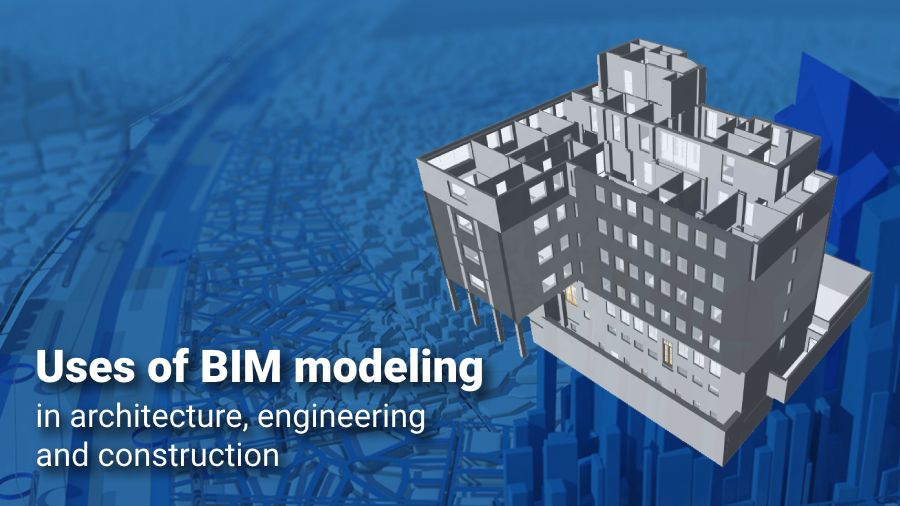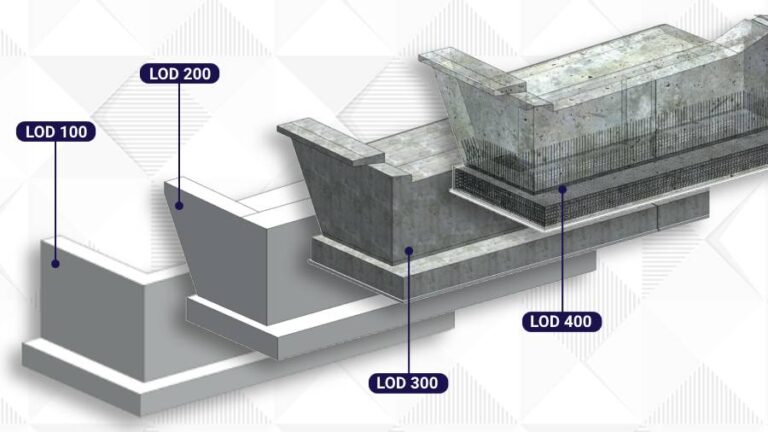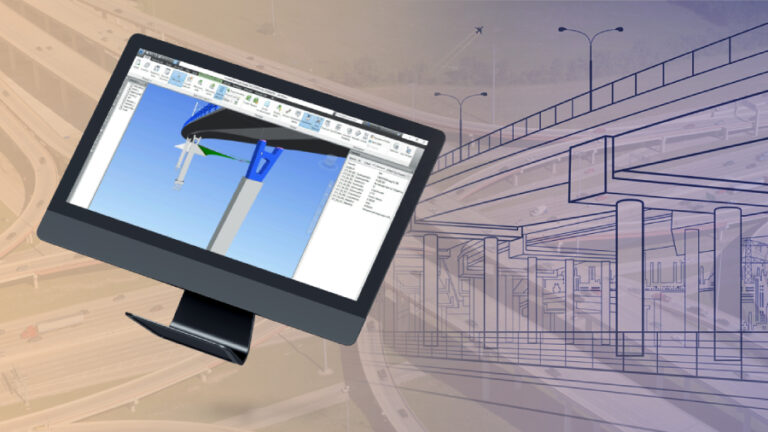Uses of BIM modeling in architecture, engineering and construction
BIM modeling is not limited to software, although the use of programs such as ArchiCAD or Autodesk Revit, among others, is essential. Building information modeling or BIM modeling, is the sum of processes necessary to create a virtual model of a building. We explain in detail below:
So what is BIM modeling?
BIM refers to a collaborative work methodology that has been transferred to the architecture and engineering construction sector. The objective? Facilitate global and comprehensive management of projects.
With BIM modeling, data is generated and managed for a building or engineering work throughout its useful life. Graphic, non-graphic, and documentary information is included. That is, we build the digital replica of a real object in a virtual environment, through the placement of different elements in space.
We share this model that we obtain between the different teams, to reduce the time and resources used in the design, construction, and management, as well as to facilitate the exchange of information and its coherent management. On the other hand, modification and interaction with the model are not only possible but it is also recommended.
Differences between LOD and LOI
Level of Development (LOD): it is an indicator that tells us the level of detail that must be executed in a BIM model for any project according to the moment of its development. The LOD levels range from LOD 100 to LOD 500 According to the international standards of the AIA (American Institute of Architects).
Level Of Information (LOI): With the LOI indicator, we know the point of development or maturity of the information that each element of the model has. That is, it measures how much information there is and of what quality. The LOI gives us the level of data, parameters, and geometry of a BIM model.
But keep in mind that the LOD / LOI applies to each element. Therefore, to say that a project has reached a specific LOD / LOI level, all its elements must have achieved it as well, although some of them add up to more than others when it comes to qualifying the degree of general development.
Variation of information according to use
Throughout a BIM modeling process, the detail and class of the information increase, so it is necessary to change the level. There are five types of LOD levels for this:
LOD 100: It is the basic and more conceptual stage, in which the elements of the project are listed, without graphic elements.
LOD 200: Here we begin to graphically define the element. We add approximate geometric data on some dimensions, quantities, location, and orientation. It allows estimating costs.
LOD 300: At this LOD level, we go into detail. The shape, size, quantities, location of the item within the project, and materials are precisely and graphically specified. What’s more, non-graphic information can be associated with objects, to facilitate identification and purchase.
LOD 400: To the data of the LOD 300, the specific parameters are added (units, layers, thicknesses in cm, etc.). The information is 80% complete and facilitates the creation of workshop drawings, as well as the manufacture and installation of elements.
LOD 500: This level is known as as-built, with graphic information that faithfully corresponds to what was built. Also, any differences between modeling and reality have been adjusted to the maximum.
Main uses of BIM modeling
One of the first decisions to be made when starting a project is the objectives and uses of BIM modeling, which we will reflect on in the BIM Execution Plan (BEP). These are some of the most frequent applications:
Energy analysis
It is very useful to obtain certificates of sustainability and energy efficiency, such as LEED certification. Allows you to compare the actual performance of a building with that detailed in the design. It also serves to analyze lighting and control ventilation.
Measurement control for budget calculation
BIM modeling facilitates cost control in the different phases of the project, including construction, operation, and maintenance of the same. An example of this is the modeling for bids, so those precise measurements can be obtained for the realization of bids with limited estimates.
Facility management and asset management
Another common use of BIM modeling is to allow linking all the information necessary for asset management in a visual and digitized way, being able to access it in an immediate, updated, and structured way throughout the useful life of the building. Thus, it helps to foresee, control and program the investment in modifications, either in the short or long term.
Anticipation of possible incidents on site
With construction information modeling, it is also possible to prevent incidents and deal with them with greater agility and efficiency. This reduces unforeseen events and has room to find a solution.
Control on site
Applying it helps us to optimize resources during construction, control the execution of the work, plan times and jobs and determine the location of the construction equipment.
Refurbishments with point cloud
3D scanning is one of the great contributions of the BIM methodology. It allows us to obtain a reliable model and documentation of an already constructed building. This use is used for rehabilitation projects, in which the point cloud is used as a basis for surveying the building to be rehabilitated. That is, the area is scanned and then the Point cloud to BIM modeling is carried out, which will be completely faithful to what was built. Already then the rehabilitation project is drawn up.
BIM modeling services from MaRS BIM
In our architecture and BIM consulting company, we rely on this methodology to offer the design and management of building and architecture projects. With it, you will be able to optimize the investment and reduce risks, while betting on sustainable construction.
We have extensive experience in the development of BIM models of different scales and levels of detail, with more than 250,000 m² modeled, offering a personalized service, and adapting to the needs and times of the client.
Consult the BIM services of MaRS BIM and contact us so that we can design a personalized proposal for you.






